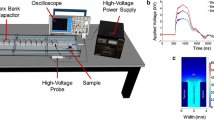Abstract
Modeling microbial inactivation by pulsed electric fields (PEF) can be approached at different scrutiny levels. The starting point can be the biophysical effects on an individual cell’s membranes and organelles, their manifestation at the cellular level, and in turn on the population’s survival curve. This chapter focuses on different kinds of population models. It presents empirical phenomenological dose–response models and a method to translate PEF survival data into equivalent thermal inactivation curve at a chosen lethal reference temperature. It includes a proposal to combine deterministic continuous survival and injury models and demonstrations of how stochastic events at the cellular level are manifested in observed inactivation patterns at the population level. The potential utility of the stochastic and deterministic kinetic models in describing PEF inactivation, especially of individual or a very small number of a pathogen’s cells, is evaluated and their theoretical and practical limitations highlighted. Briefly assessed are the potential benefits and limitations of models that attempt to account for various degrees of damage that a PEF treatment might cause to a microbial pathogen’s or spoilage organism’s cells.
Access this chapter
Tax calculation will be finalised at checkout
Purchases are for personal use only
Similar content being viewed by others
References
Alvarez I, Raso J, Sala FJ, Condon S (2003) Inactivation of Yersinia enterocolitica by pulsed electric fields. Food Microbiol 20:691–700
Corradini MG, Peleg M (2007) A Weibullian model of microbial injury and mortality. Int J Food Microbiol 119:319–328
Corradini MG, Peleg M (2010) Comparing the effectiveness of thermal and non-thermal preservation processes: the concept of equivalent efficacy. In: Doona CJ, Kustin K, Feeherry FE (eds) Case studies in novel food processing technologies. Woodhead, Cambridge, UK, pp 464–488
Corradini MG, Normand MD, Peleg M (2010) A stochastic and deterministic model of microbial heat inactivation. J Food Sci 75:R59–R70
Dermol J, Miklavčič D (2015) Mathematical models describing Chinese hamster ovary cell death due to electroporation in vitro. J Memb Biol 248:865–881
Garcia PA, Davalos RV, Miklavčič D (2014) A numerical investigation of the electric and thermal cell kill distributions in electroporation-based therapies in tissue. PLoS One 9(8), e103083
Heinz V, Alvarez I, Angersbacha A, Knorr D (2002) Preservation of liquid foods by high intensity pulsed electric fields – basic concepts for process design. Trends Food Sci Technol 12:103–111
Horowitz J, Normand MD, Corradini MG, Peleg M (2010) A probabilistic model of growth, division and mortality of microbial cells. Appl Environ Microbiol 76:230–242
Hulsheger H, Potel J, Niemann E-G (1983) Electric field effects on bacteria and yeast cells. Radiat Environ Biophys 22:149–192
Kotnik TW, Sack M, Haberl Meglič S, Peterka M, Miklavčič D (2015) Electroporation-based applications in biotechnology. Trends Biotechnol 33:480–488
Pataro G, Barca GMJ, Donsi G, Ferrari G (2015) On the modeling of electrochemical phenomena at the electrode- solution interface in a PEF treatment chamber: methodological approach to describe the phenomenon of metal release. J Food Eng 165:34–44
Peleg M (1995) A model of microbial survival after exposure to pulsed electric fields. J Sci Food Agric 67:93–99
Peleg M (1996) Evaluation of the Fermi equation as a model of dose–response curves. Appl Microbiol Biotechnol 46:303–306
Peleg M, Cole MB (1998) Reinterpretation of microbial survival curves. Crit Rev Food Sci Nutr 38:353–380
Peleg M, Normand MD, Damrau E (1997) Mathematical interpretation of dose–response curves. Bull Math Biol 59:747–761
Rodrigo D, Barbosa-Canovas GV, Martinez A, Rodrigo M (2003) Weibull distribution function based on an empirical mathematical model fro inactivation of Escherichia coli by pulsed electric fields. J Food Prot 6:911–1099
Toepfl S, Heinz V, Knorr D (2007) High intensity pulsed electric fields applied for food preservation. Chem Eng Process 46:537–546
van Boekel MAJS (2002) On the use of the Weibull model to describe thermal inactivation of microbial vegetative cells. Int J Food Microbiol 74:139–159
Vega-Mercado H, Martin-Belloso O, Qin B-L, Chang FJ, Gongora-Nieto MM, Barbosa-Canovas GV, Swan BG (1977) Non-thermal food preservation: pulsed electric fields. Trends Food Sci Technol 8:151–157
Wouters PC, Alvarez I, Raso J (2001) Critical factors determining inactivation kinetic by pulsed electric field food processing. Trends Food Sci Technol 12:112–121
Zhang Q, Barbosa-Canovas GV, Swanson BG (1995) Engineering aspects of pulsed electric fields pasteurization. J Food Eng 25:261–281
Zhao W, Yang R, Shen X, Zhang SH, Chen X (2013) Lethal and sublethal injury and kinetics of Escherichia coli, Listeria monocytogenes and Staphylococcus aureus in milk by pulsed electric fields. Food Control 32:6–12
Author information
Authors and Affiliations
Corresponding author
Editor information
Editors and Affiliations
Rights and permissions
Copyright information
© 2017 Springer International Publishing AG
About this entry
Cite this entry
Peleg, M. (2017). Modeling Microbial Inactivation by Pulsed Electric Field. In: Miklavčič, D. (eds) Handbook of Electroporation. Springer, Cham. https://doi.org/10.1007/978-3-319-32886-7_43
Download citation
DOI: https://doi.org/10.1007/978-3-319-32886-7_43
Published:
Publisher Name: Springer, Cham
Print ISBN: 978-3-319-32885-0
Online ISBN: 978-3-319-32886-7
eBook Packages: EngineeringReference Module Computer Science and Engineering





